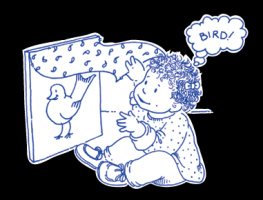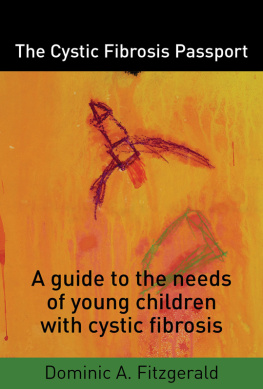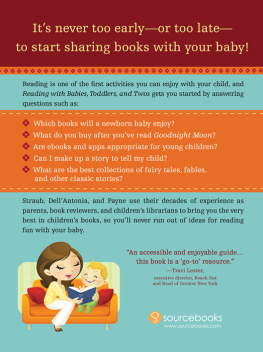
Published by Redleaf Press
10 Yorkton Court
St. Paul, MN 55117
www.redleafpress.org
2016 by Cathy Waggoner and Martha Herndon
All rights reserved. Unless otherwise noted on a specific page, no portion of this publication may be reproduced or transmitted in any form or by any means, electronic or mechanical, including photocopying, recording, or capturing on any information storage and retrieval system, without permission in writing from the publisher, except by a reviewer, who may quote brief passages in a critical article or review to be printed in a magazine or newspaper, or electronically transmitted on radio, television, or the Internet.
First edition 2016
Cover design by Jim Handrigan
Cover photograph by junial/Thinkstock
Interior design by Percolator
Typeset in Sirba
Library of Congress Cataloging-in-Publication Data
Waggoner, Cathy.
Starting with character: activities for infants, toddlers, and twos / Cathy Waggoner and Martha Herndon. First edition.
pages cm
ISBN 978-1-60554-448-9 (ebook)
1. Moral education (Preschool) 2. CharacterStudy and teachingActivity programs.
3. ChildrenConduct of life. I. Herndon, Martha. II. Title.
LC268.W28 2016
370.11'4dc23
2015015852
Dedication
Sometimes seeing a new generation can spark someones vision to invest in a bold and hopeful idea. Observing the exemplary early childhood education program attended by his grandchildren, retired businessperson Robert Kirkland became inspired to help less fortunate children in his home community. Kirkland believed that at-risk children would be better equipped for school success, and become better citizens in the future, if they had opportunities to participate in high-quality early education environments similar to the one experienced by his grandchildren.
The program Kirklands grandchildren attended used state and national standards for early learning. It was based on the philosophy that children learn best when they are in nurturing environments that are responsive to their academic- and character-development needs. Kirkland returned to his rural hometown and enlisted the help of his Rotary colleagues and several early childhood professionals. As an entrepreneurial businessperson with forty years experience in developing successful businesses from the ground up, Kirkland applied his expertise to improving the quality of early childhood environments and school preparation experiences of the children in his community.
Kirklands vision and generosity resulted in the creation of the nonprofit Promethean Foundation. In December 2004 the foundation began providing funds for at-risk children birth to age five to attend high-quality child care environments. Our community is forever indebted to the Kirkland family and the Robert E. and Jenny D. Kirkland Foundation for its generosity. To you we dedicate this book.
Mr. Robert E. Kirkland passed away on April 11, 2015. He was the original motivation behind the development of Starting with Character. He believed the teaching of good character should be intentional and by design. His spirit and character live on through the lives of those he touched.
Contents
Guide
Writing a book is not something that happens without the support and assistance of many people. When the Promethean board of directors challenged us to create a guide for teaching positive character development, it seemed at first an impossible task. The journey from research to results took years. This project would never have happened without philanthropists Robert and Jenny Kirkland and their generous Kirkland Foundation. We are also deeply grateful for the guidance of the Union City Rotary Club and governing board, the Promethean board of directors, and early childhood teachers, directors, support personnel, and community leaders.
The Kirkland Foundation charged us with the task of developing a program to teach positive character traits to children beginning at birth. We approached the task with hope and a belief in the positive outcome of our endeavors. Many people helped us in our efforts to identify and develop effective and engaging activities for infants and toddlers. As we developed ideas, we asked teachers to test them in child care centers, and we followed the children in those centers to see if the character education made a difference. We appreciate the assistance of the staff and faculty of Union City School System and Obion County School System as they continue to cooperate with us every year to collect information that helps us understand and evaluate our effectiveness. The individual teachers in the school systems we contacted were always helpful and professional in their responses. The Tennessee Department of Education offered cooperation and a listening ear. The University of Tennessee at Martin provided expertise and assistance in data analysis and volunteers for various activities. To all of you, we are thankful you were willing to participate in this manner.
We are also grateful to the staff, volunteers, and interns who worked in our office through the years helping us with data collection, data entry, daily office operation, and numerous other tasks. We appreciated your servant attitude more than you can ever know. It was a constant reminder of the good character virtues we aim to teach young children.
We want to specifically recognize some very special individual teachers for their assistance in developing activities for young children. These teachers provided valuable insights into the activities included in the book by testing them in their classrooms and contributing additional ideas. We thank them for this contribution. They include Beth Payne, teacher at Childrens Corner, 2009; Joni Southerland, teacher at Kare Bear, 2009; Teena Lairy Jarmon, teacher at Pumpkin Patch, 2009; Zula Massengill, teacher at Small World, 2009; and Karen Vise, teacher at Small World, 2010.
Starting with Character came into being when we were challenged to plan a character education program for children ages six weeks to five years. Reviewing the existing literature and resources on character education, we found very little targeting young children. Many materials designed for middle childhood and adolescence were available, but these clearly did not meet the unique and specific needs of young children. Since we know that early childhood is a critical time for learning, the lack of resources was disappointing. When we could not find a character education program for young children, we decided to create one.
Have you ever played a game of give and take with an infant? It is a wonderful experience! A baby holding a toy reaches out to hand it to you, offering it with intensity. You take the toy and say, Thank you! Then, after a moment of admiring the toy, you offer it back. The baby is thrilled to receive the toy and smiles! Sometimes children will repeat this activity several times. This experience demonstrates the readiness of very young children to express generosity and gratitude, positive character traits. The potential of developing character begins early; therefore, parents, caregivers, and teachers need resources to use with children starting at birth.
Research supports that the first five years represent the most critical time for brain development in children. Environmental factors contribute significantly to brain development during that time (Shore 1997). Stimulating, rich, and developmentally appropriate environments can have powerful and positive impacts, especially for at-risk children. Childrens environments in the early years include their homes, the homes of friends and relatives, and their child care settings. For many, as much as 50 percent of each day is spent in child care. With this understanding, we made an effort to develop character education activities that could be integrated into high-quality early childhood environments for young children.






